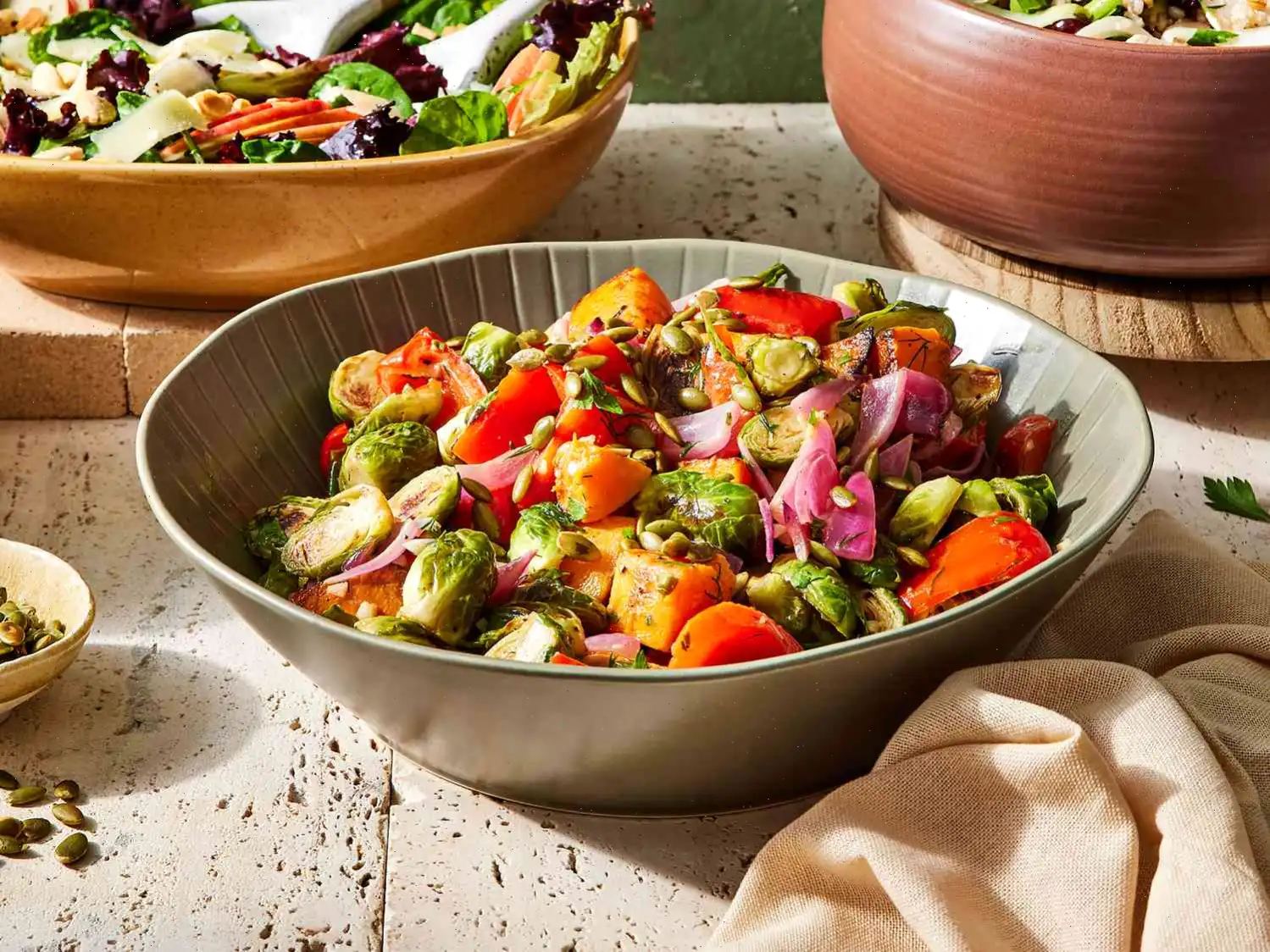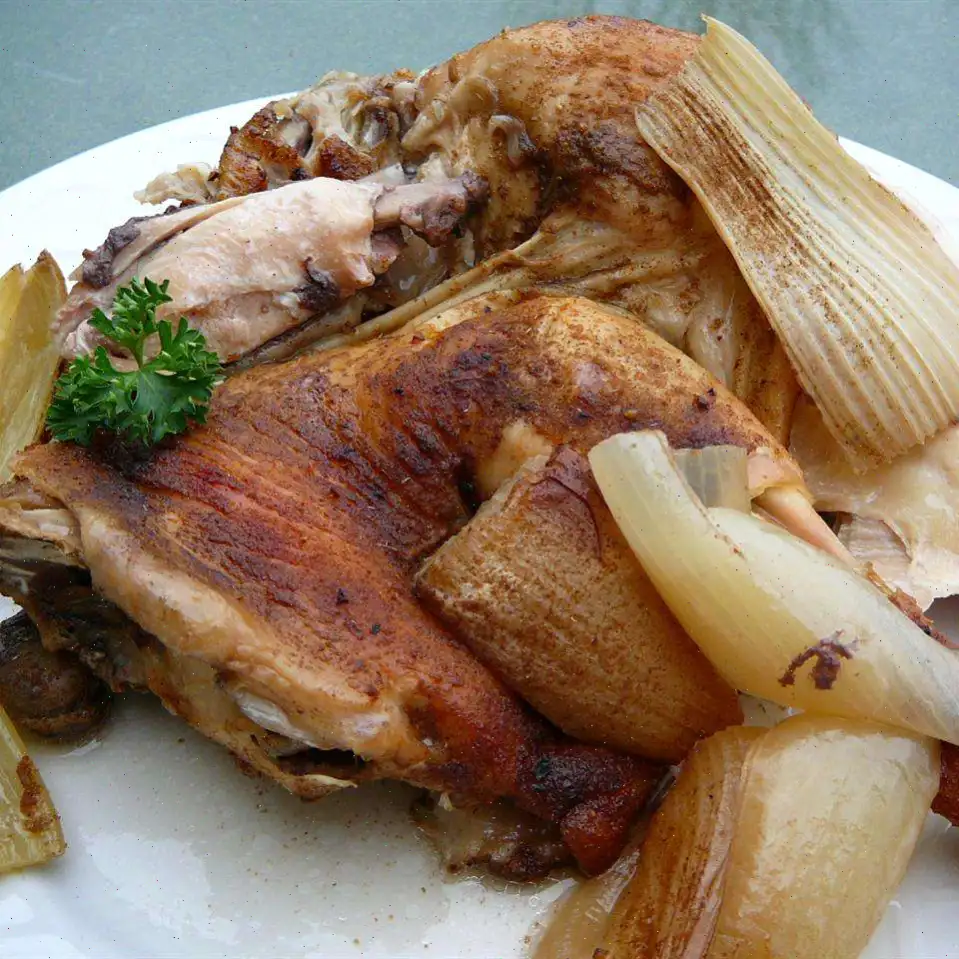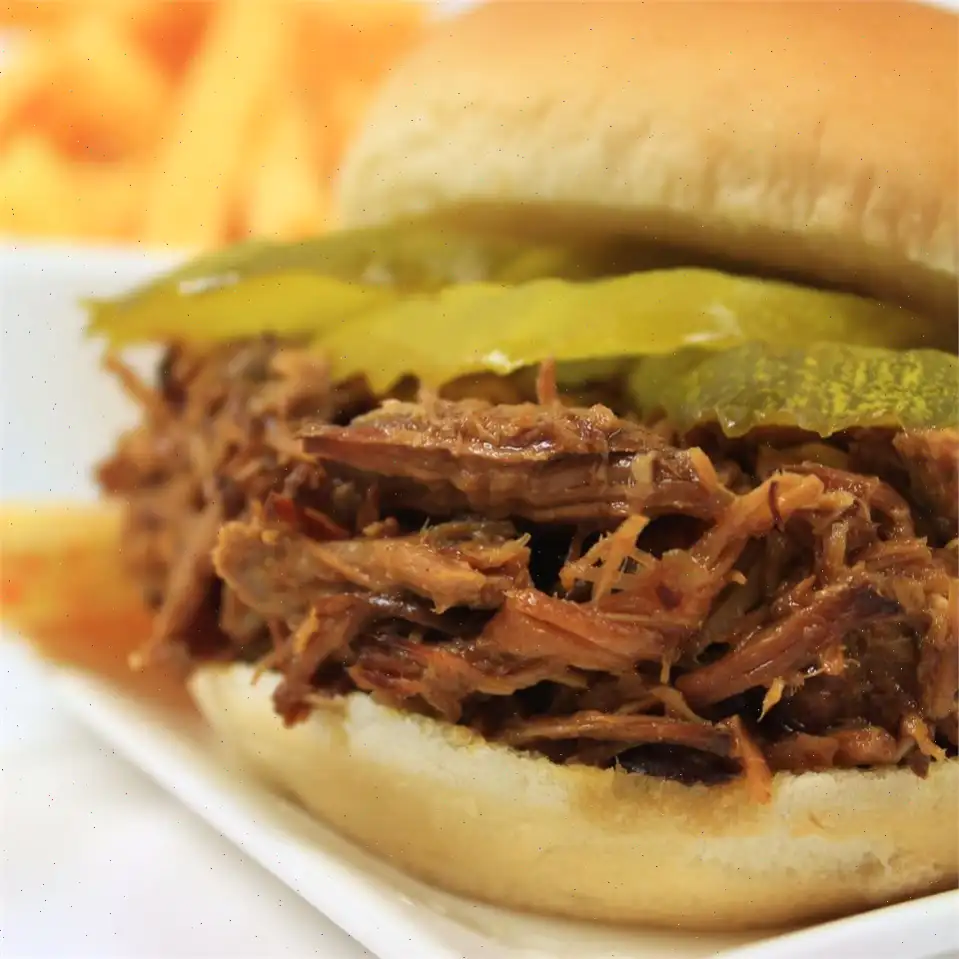
Pineapple Shrimp Stir-Fry Recipe
Ingredients
This recipe was developed at its original yield. Ingredient amounts are automatically adjusted, but cooking times and steps remain unchanged. Note that not all recipes scale perfectly. Original recipe (1X) yields 4 servings.
- 1 (8 ounce) can pineapple chunks in juice
- cup soy sauce
- cup rice vinegar
- 2 tablespoons sesame oil
- 1 tablespoon minced fresh garlic
- 1 tablespoon grated fresh ginger
- 1 teaspoon fish sauce (Optional)
- teaspoon dried red pepper flakes
- 2 tablespoons avocado oil (or other neutral oil)
- 1 medium red onion, cut into 1-inch chunks
- 1 medium orange bell pepper, cut into 1-inch chunks
- 1 medium red bell pepper, cut into 1-inch chunks
- 4 cups broccoli florets
- 1 pound large shrimp, peeled and deveined
- 2 tablespoons cornstarch
- 2 tablespoons chopped cashews, or to taste (Optional)
Directions
- Measure out cup of pineapple juice from the can and add it to a small mixing bowl. Set the pineapple chunks aside, and reserve any extra juice for another use or discard.
- Add soy sauce, rice vinegar, sesame oil, garlic, ginger, fish sauce, and pepper flakes to the pineapple juice. Stir until well combined. Transfer cup of the mixture to a small bowl, leaving the rest in the mixing bowl.
- Heat a 12-inch nonstick skillet or wok over medium heat. Add the avocado oil to the hot wok and heat it until it shimmers, about 30 seconds.
- Add the red onion and bell peppers to the wok. Cook and stir for 1 to 2 minutes.
- Add the broccoli florets to the wok. Cook and stir for another minute.
- Pour the sauce from the mixing bowl into the skillet and bring it to a boil.
- Add the shrimp to the skillet. Cook until they turn pink and begin to curl, about 2 to 3 minutes.
- Meanwhile, stir the cornstarch into the sauce in the small bowl, mixing until there are no lumps. Slowly add the cornstarch mixture to the skillet, stirring constantly.
- Add the reserved pineapple chunks to the skillet and cook until the sauce thickens, about 1 to 2 minutes.
- Remove from heat and sprinkle chopped cashews on top, if desired. Serve immediately.
Nutrition Facts
Nutrition data for this recipe includes the full amount of pineapple juice. The actual amount of pineapple juice consumed will vary.
| Nutrition Facts (per serving) | |
|---|---|
| Calories | 416 |
| Total Fat | 17g |
| Saturated Fat | 3g |
| Cholesterol | 239mg |
| Sodium | 2893mg |
| Total Carbohydrate | 36g |
| Dietary Fiber | 7g |
| Total Sugars | 15g |
| Protein | 34g |
| Vitamin C | 207mg |
| Calcium | 205mg |
| Iron | 3mg |
| Potassium | 1032mg |
* Percent Daily Values are based on a 2,000 calorie diet. Your daily values may be higher or lower depending on your calorie needs.
History of Origin
The Pineapple Shrimp Stir-Fry combines the bold, vibrant flavors of Asian stir-fry with the sweet, tropical tang of pineapple. The dish draws inspiration from Southeast Asian and Chinese cuisine, where stir-frying vegetables and seafood is a common technique. However, the addition of pineapple is more typical of Thai or Filipino cuisines, where fresh fruits like pineapple are often incorporated into savory dishes. This fusion of flavors highlights the balance of sweetness, saltiness, and umami, a hallmark of Asian culinary traditions. Over time, as global cuisine has become more interconnected, the dish has evolved to become popular in Western kitchens as well, particularly in the form of quick and easy stir-fries.
Regional Variations
While the base of Pineapple Shrimp Stir-Fry remains the same, several regional variations exist. In Thailand, for instance, you might find a version with a hint of chili or lime to add heat and acidity. The use of fish sauce, a key ingredient in this dish, is especially common in Southeast Asia, where it adds depth of flavor. In contrast, the Filipino version of pineapple-based seafood dishes might include a more pronounced sweetness from the pineapple, paired with a more savory and less spicy approach. The specific vegetables used can also vary by region, but commonly, bell peppers, onions, and broccoli are featured in stir-fried recipes across Asia.
Difference from Similar Dishes
Pineapple Shrimp Stir-Fry stands out from other shrimp stir-fry recipes because of its distinct use of pineapple, which not only adds sweetness but also a juicy, refreshing texture. While many stir-fry dishes focus on soy sauce or oyster sauce for seasoning, this recipe incorporates rice vinegar, sesame oil, and fish sauce, creating a more complex flavor profile. Additionally, the presence of cashews in the dish adds a crunchy contrast to the tender shrimp and vegetables, setting it apart from more traditional, simpler stir-fries. This recipe also places a special emphasis on creating a balance between sweet, savory, and spicy elements, which is not always the case in other shrimp stir-fries that may be more heavily focused on savory or salty notes.
Where It's Typically Served
Pineapple Shrimp Stir-Fry is often served as a quick and flavorful main course, particularly in casual or family-friendly dining settings. The dish is commonly found in Asian fusion restaurants, where traditional stir-fry dishes are updated with unique ingredients like pineapple. It is also popular in home kitchens due to its ease of preparation and ability to showcase vibrant, fresh ingredients. In tropical regions, such as Hawaii or the Philippines, this dish may be a local favorite, thanks to the abundant availability of fresh pineapple and seafood. It pairs wonderfully with steamed jasmine rice, absorbing the sauce and completing the meal.
Fun Facts
- Pineapple is not only a sweet and juicy fruit, but it also contains bromelain, an enzyme known to aid digestion and tenderize meat, making it a perfect pairing for shrimp.
- In some cultures, pineapple is believed to bring good luck and fortune, adding an element of positivity to any dish it graces.
- This dishs versatility allows for creative adaptations, such as substituting shrimp with other proteins like chicken or tofu, or even adding extra fruits like mango for an even more tropical twist.
- The use of cashews in this stir-fry provides a satisfying crunch, while also adding healthy fats, making this dish both delicious and nutritious.
You can listen to this recipe in AI audio format. Simply click the play button below to listen to the content in a format that suits you best. It’s a great way to absorb information on the go!







